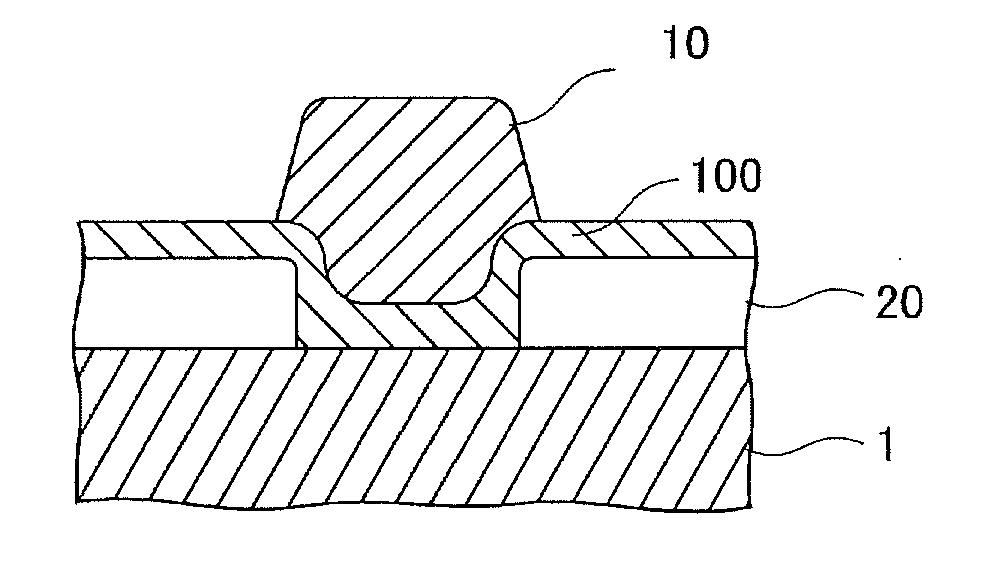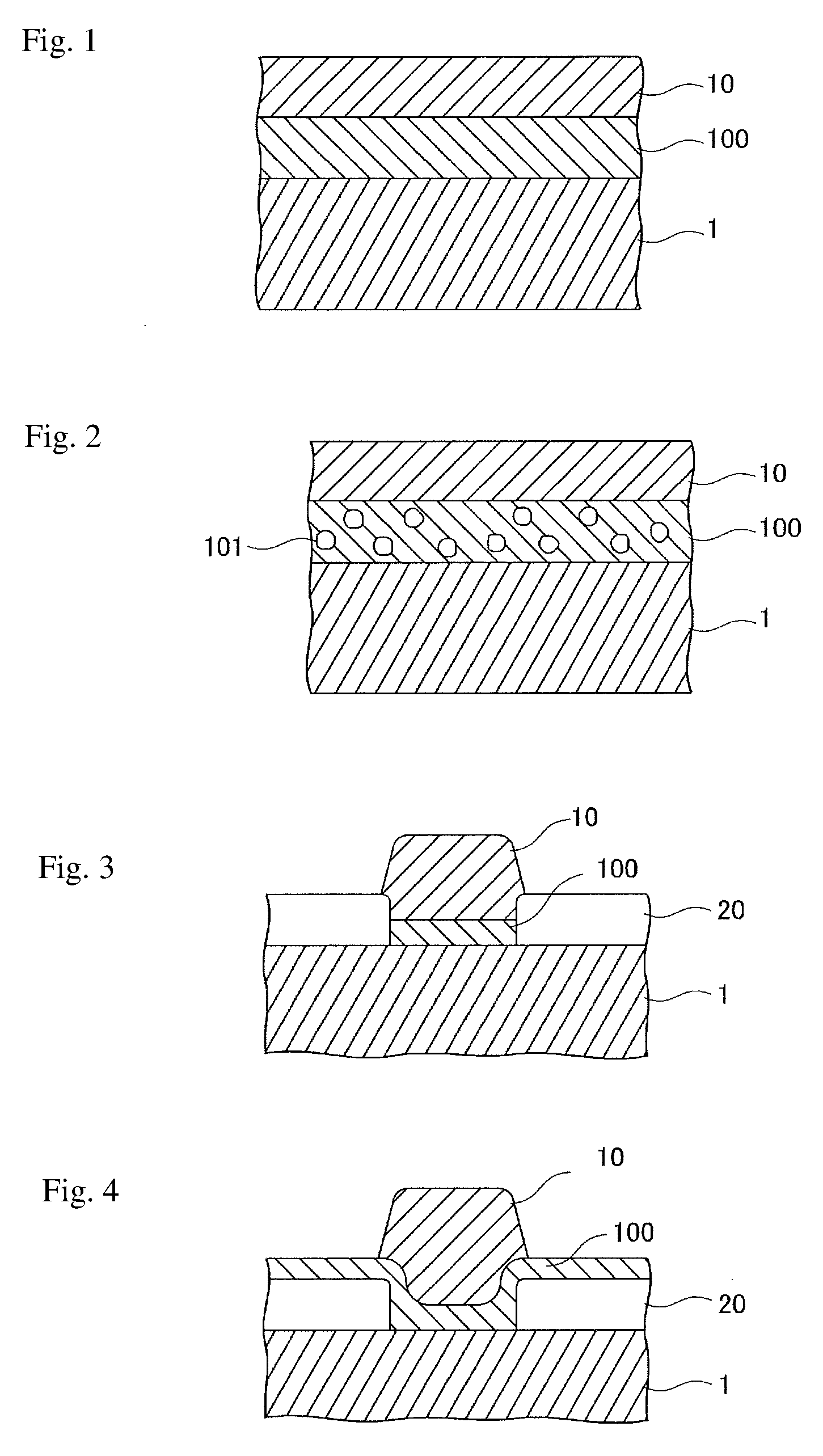Solar cell and production method therefor
- Summary
- Abstract
- Description
- Claims
- Application Information
AI Technical Summary
Benefits of technology
Problems solved by technology
Method used
Image
Examples
example 1
[0137]A monocrystalline p-type silicon wafer with a dimension of 156 mm square and 0.2 mm thickness was used as a silicon substrate. The p-type impurity was boron (B) and the impurity concentration was about 1×1016 cm-3. The upper surface of this wafer was etched with a KOH solution, and a texture structure with unevenness was formed. Subsequently, after POCl3 was applied to the upper surface, heat-treatment was performed at high temperature to diffuse phosphorus (P) into silicon, thereby forming an n+ region. The concentration of P was up to about 1×1019 cm-3. A silicon substrate having n-p junction was produced in this way.
[0138]As a raw material solution, a mixture solution comprising a Ti-based alkoxide compound, an Nb-based alkoxide compound, and a solvent was prepared. A slit coating device was used to uniformly apply the raw material solution on the silicon substrate. The substrate on which the solution had been applied was dried at about 200° C., and then calcined by perform...
example 2
[0149]An antireflection SiN film with a thickness of 80 nm was deposited on the surface of the silicon substrate having n-p junction from Example 1 by the plasma-enhanced chemical vapor-phase deposition method (PECVD). Then, a portion in which copper wiring was to be formed was removed by the laser ablation method.
[0150]A metal oxide and copper wiring were formed on the above silicon substrate on which the antireflection film had been formed, under similar conditions as in Example 1.
[0151]The electric resistivity of the copper wiring was 3.3 μΩcm, the adhesion strength of the copper wiring was 1.9 N / mm, and the visible light transmittance of the metal oxide layer at a wavelength of 500 nm was 92%. Further, after a heat treatment at 500° C. for 30 minutes, copper atoms were found to be below the detection limit, and interdiffusion of Cu and Si was not observed, indicating that good diffusion barrier characteristics were obtained.
example 3
[0152]After forming a metal oxide layer comprising copper, titanium, niobium on a silicon substrate at a thickness of about 30 nm under similar conditions as in Example 1, heat treatment was performed for 10 minutes at a temperature of 500° C. and an ambient pressure of 104 Pa under a reducing atmosphere in which 5% hydrogen was mixed in nitrogen. In the structure after the heat treatment, copper particles were precipitated in the metal oxide comprising titanium and niobium. The mean diameter of the copper particles was about 5 nm.
[0153]Then, copper wiring was formed by the method described in Example 1. The electric resistivity of the copper wiring was 3.0 μΩcm, the adhesion strength of the copper wiring was 4.2 N / mm, and the visible light transmittance of the metal oxide layer at a wavelength of 500 nm was 90%. Further, after a heat treatment at 500° C. for 30 minutes, copper atoms were found to be below the detection limit, and interdiffusion of Cu and Si was not observed, indica...
PUM
 Login to View More
Login to View More Abstract
Description
Claims
Application Information
 Login to View More
Login to View More - R&D
- Intellectual Property
- Life Sciences
- Materials
- Tech Scout
- Unparalleled Data Quality
- Higher Quality Content
- 60% Fewer Hallucinations
Browse by: Latest US Patents, China's latest patents, Technical Efficacy Thesaurus, Application Domain, Technology Topic, Popular Technical Reports.
© 2025 PatSnap. All rights reserved.Legal|Privacy policy|Modern Slavery Act Transparency Statement|Sitemap|About US| Contact US: help@patsnap.com


